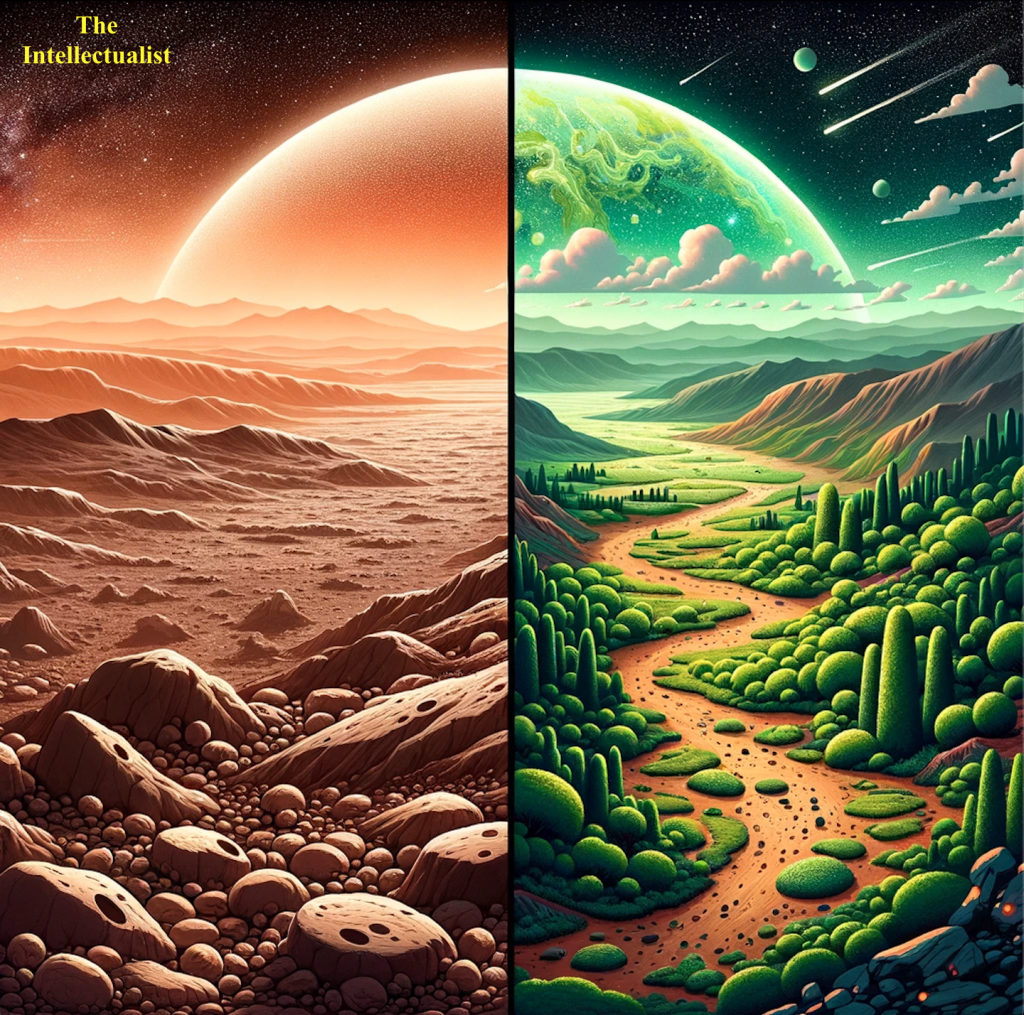Earth First, Then the Stars: Terraforming as a Stepping Stone to the Cosmos

Terraforming, the process of manipulating a planet’s environment to make it more Earth-like, is a concept that holds both promise and controversy.
As the climate crisis on Earth accelerates, discussions around geoengineering—essentially terraforming our home planet to restore ecological balance—have gained traction. The Intergovernmental Panel on Climate Change (IPCC) now entertains geoengineering as a viable method to mitigate climate change, calling for large-scale removal of greenhouse gases from the atmosphere.
Historically, terraforming was a term associated with altering extraterrestrial bodies to support Earth-like life.
However, the urgency of the Anthropocene era, marked by human-induced environmental changes, has turned the focus towards geoengineering Earth to preserve its hospitability. The idea of rewilding Earth is seen as a preparatory step for potential terraforming projects on Mars, emphasizing the importance of mastering terraforming technologies on Earth before venturing beyond.
The discourse on terraforming Mars reveals the monumental challenges of such an endeavor. Despite Mars’s Earth-like conditions billions of years ago, its transformation into a chilly desert due to the loss of its magnetic field and the resultant solar wind stripping away its atmosphere makes terraforming a daunting task.
Current suggestions to warm Mars range from Elon Musk’s proposition of exploding nuclear bombs over its polar caps to vaporize frozen carbon dioxide, to redirecting asteroids and comets to hit Mars, and even importing heat-trapping gases. However, all these proposals fall short of significantly warming Mars due to the lack of sufficient carbon dioxide and other resources necessary for creating a sustainable atmosphere4.
Moreover, terraforming Mars entails not just warming the planet but also making its atmosphere breathable. Experiments like MOXIE on NASA’s Perseverance rover, which aims to convert Martian carbon dioxide into oxygen, are initial steps towards this goal. Yet, making the entire Martian atmosphere breathable for humans may still remain a far-off dream.
It’s posited that introducing special microorganisms capable of photosynthesis in low-light conditions could create a breathable atmosphere over a few thousand years.
However, Mars’s lack of a protective magnetic field continues to pose a substantial hurdle as it allows the solar wind to strip away its atmosphere, a problem that even the most optimistic terraforming proposals struggle to address comprehensively.
The contemplation of terraforming Mars underscores the narrative of humanity’s quest for survival and advancement, a story deeply intertwined with our response to climate change on Earth. The discourse invites a philosophical reflection on our place in the cosmos, our relationship with our home planet, and the ethical, legal, and technological pathways that could, one day, lead us from being mere dwellers on Earth to becoming cosmic gardeners.
The journey from geoengineering Earth to terraforming Mars encapsulates the profound exploration of human ingenuity and the quest for sustainability both on Earth and in the cosmos.
Bibliography
- Marshall, Michael. “Terraforming Earth: Geoengineering megaplan starts now.” New Scientist, 9 October 2013. Accessed on New Scientist.
- CCCB LAB. “Terraforming the Earth, Redesigning the World.” Accessed on CCCB LAB.
- Space.com. “Terraform Earth? Rewilding the Planet Could Help Us Plan for Mars.” Accessed on Space.com.
- Skiver, Rayna. “A NASA Scientist Explained How to Terraform Mars — an Idea That’s a Bit Controversial.” Green Matters, 26 January 2023. Accessed on Green Matters.
- Mehta, Jatan. “Can We Make Mars Earth-Like Through Terraforming?” The Planetary Society, 19 April 2021. Accessed on The Planetary Society.

